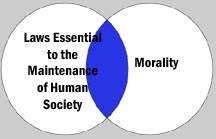This is a sorta kinda followup to the last post, which discussed matters of life and death, space and time, religion, law, morality, and what it is to be human. Which was a tad ambitious now that I think about it. But I request that people not add comments disagreeing with this post until you’ve read that one. This will save us both a lot of time.
Anyway, I see that some righties are upset about a British court ruling that will allow physicians to impose a “do not resuscitate” order for Baby Charlotte, a desperately ill two-year-old, against the wishes of her parents.
The rightie blogger of Stop the ACLU asks,
Is this the direction America is headed? Is this where the ACLU, and the “right to die†folks will take us?
Kim Priestap of Wizbang blames socialized medicine:
Baby Charlotte’s health is fragile normally, so she will go through health scares like this again. This will cost Britain a lot of money. Since Britain has a nationalized healthcare system, funded by taxpayer money, it’s in the state’s best interest to let her die.
What’s going on here? As a mother myself I’m very uncomfortable when government interferes with family decisions like this. I tend to think that when the family is agreed the patient should be resuscitated, the doctors should respect the decision and not involve courts. I don’t know enough about Baby Charlotte to be able to judge whether there is a compelling reason to make an exception in her case. I infer from news stories that the doctors consider her case to be hopeless and that keeping her alive is just making her suffer. And her parents see things very differently.
I argued in the last post that humans need to struggle with hard choices. When governments or other institutions swoop into our lives and make our choices for us, it makes us less human. And this is true even when we make “bad” choices (within the law, of course). Our decisions may be less important than the process we go through to make them. So in that respect I’m sympathetic to the rightie point of view.
However … the title of this post doesn’t refer to Baby Charlotte. It refers to the righties who are oh, so innocent of the facts of life and death these days.
Nearly a year ago us “culture of death” liberals took up the cause of Sun Hudson, a Texas baby whose life support was terminated against family wishes. Although their diagnoses may differ, the legal situations of Baby Sun and Baby Charlotte seem to me to be nearly identical. If anything, Sun’s case was more extreme than Charlotte’s. His mother (father unknown) wanted aggressive medical care to continue, but the law sided with physicians who decided enough had been enough. Baby Sun’s breathing tube was removed on March 15, 2005, and he died of asphyxiation within minutes.
My understanding is that Sun Hudson’s prognosis really was hopeless. But then, so was Terri Schiavo’s.
Sun Hudson died three days before Terri Schiavo’s feeding tube was removed for the last time. Some of you might recall that righties got a tad excited about the Schiavo case. However, they were mostly silent about Sun Hudson — slipped their attention, I guess. Were it not for liberal blogs I wouldn’t have heard about Sun Hudson either.
Why were righties so oblivious to the Sun Hudson case? One explanation is that the law that allowed his life to be terminated had been signed by then-Governor George W. Bush.
The federal law that President Bush signed early yesterday in an effort to prolong Terri Schiavo’s life appears to contradict a right-to-die law that he signed as Texas governor, prompting cries of hypocrisy from congressional Democrats and some bioethicists.
In 1999, then-Gov. Bush signed the Advance Directives Act, which lets a patient’s surrogate make life-ending decisions on his or her behalf. The measure also allows Texas hospitals to disconnect patients from life-sustaining systems if a physician, in consultation with a hospital bioethics committee, concludes that the patient’s condition is hopeless.
Bioethicists familiar with the Texas law said yesterday that if the Schiavo case had occurred in Texas, her husband would be the legal decision-maker and, because he and her doctors agreed that she had no hope of recovery, her feeding tube would be disconnected. [Knight Ridder]
The Sun Hudson story came out just as the VRWC media echo chamber was working overtime to promote George W. Bush as a champion of life. Faux News’s Bill O’Reilly first commented on the Sun Hudson story before he discovered the Bush angle, forcing him to flip-flop harder than a trout on a hot pier. While Terri Schiavo’s parents were depicted as noble and pure of heart, Sun Hudson’s mother became a deranged black woman who couldn’t face reality. Never fear; O’Reilly had flip-flopped back by April when he attacked the ACLU for (perhaps) being behind “infanticide for impaired babies.”
Let’s go back to the Texas Advance Directives Act of 1999, which is the law under which Sun Hudson’s life was terminated. Put very simply, the law allows a health care facility to discontinue life support against the wishes of the patient’s family. The law requires the facility to jump through a number of hoops before it can do this, which ensures there is an overwhelming medical consensus that the patient’s condition is hopeless before the plug is pulled. The family has the option of finding another medical facility willing to continue life support. But other medical facilities are unlikely to take such a patient, especially if the patient will be a drain on the budget.
In other words, if the family is wealthy enough to pay the costs of Grandma’s care and make a generous contribution to the hospital building fund, Grandma lives. If the family’s insurance is capped and they’ve already spent the second mortgage to pay her medical bills, she dies. To paraphrase (well, OK, mock) Kim Priestap of Wizbang (see above), Grandma’s care will cost hospitals a lot of money, so it’s in their best interest to let her die.
There are two issues to be addressed here, both involving rightie inability to face reality. The first is regarding health care and how it is paid for. Just about every nation on earth affluent enough for most citizens to own a microwave has some kind of national health care system. The exception is the United States. In a recent Newsweek column, Jane Bryant Quinn (hardly a socialist) said that America’s health-care system is turning into a lottery.
The winners: the healthy and well insured, with good corporate coverage or Medicare. When they’re ill, they get—as the cliche goes—”the best health care in the world.” The losers: those who rely on shrinking public insurance, such as Medicaid (nearly 45 million of us), or go uninsured (46 million and rising).
To slip from the winners’ circle into the losers’ ranks is a cultural, emotional and financial shock. You discover a world of patchy, minimal health care that feels almost Third World. The uninsured get less primary or preventive care, find it hard to see cardiologists, surgeons and other specialists (waiting times can run up to a year), receive treatment in emergencies, but are more apt to die from chronic or other illnesses than people who pay. That’s your lot if you lose your corporate job and can’t afford a health policy of your own.
Years ago there was a joke in circulation that said a conservative is a liberal who got mugged. The new joke is that a liberal is a conservative who’s lost his health insurance.
The point is that all the evil, inhumane things going on in Other Countries That Have Socialized Medicine are happening here, too. Righties just refuse to acknowledge them. Among those Other Countries, Britain is a good “bad example” because they’ve underfunded their system for years. Meanwhile, we in the U.S. spend far more per capita than other nations (see this report in PDF format; note especially Figure 1 on page 3) but we’re getting worse results (see Table 1, page 4). By some measures we’re getting even worse results than those cheapskate Brits.
And the moral is, people whose health care system is a broken down mess shouldn’t be pointing fingers at other peoples’ health care systems.
The other issue I see here is the touching innocence of righties regarding hopelessly terminal patients. Physicians have made decisions not to aggressively treat hopeless patients, especially suffering hopeless patients, since Hippocrates. Generally they’ve done it quietly and without drawing attention to themselves, but they’ve done it. For example, since the 19th century physicians have prescribed larger and larger doses of opiates to ease the pain of dying patients, knowing that eventually the dosage will be fatal. And as far as the family ever knew, it was the cancer that killed Grandpa, not that last dose of morphine.
Just about any health care professional will confirm this. I’m sure such decisions are being made all over America even as you read this.
The reason we’re hearing about such cases these days is, IMO, multifold. First, in the past medicine wasn’t all that effective. It was easy for doctors to make a show of “doing all we can” because in truth there wasn’t a whole hell of a lot they could do. But now we can do so much more. We have medical technology that will retain life in a body even when the person that body once sustained has long since dissipated, as in Terri Schiavo’s case. The line between life and death itself has blurred.
Second, because of the technology, more and more families refuse to accept a hopeless prognosis. I understand even anencephalic babies are sometimes put on life support these days, even though those babies have no hope of survival. In earlier times, the only choice offered parents would have been whether they wanted to hold the baby while it died, or not.
And third, mass media and our “reality TV” culture make sure the more controversial decisions get global publicity. In earlier times, these matters wouldn’t have been been discussed outside the family. Today, people with less than a half-assed idea of the facts can plaster their uninformed opinions all over the Web.
As individuals, as a nation, as a society, as a species, we’ve got hard choices to make. These choices involve ourselves and our loved ones. We need to make some mature, non-politicized judgments about how to pay for health care. We must think rationally about how much of our health-care resources should be spent on futile care. We need non-hysterical discussion about if, or when, governments should intervene in family decisions. These are all complex issues. Reasonable people will disagree on many points. But we’re going to get nowhere until we’re able to face some hard realities.
Which means we’re going to get nowhere as long as righties dominate the discussion.




 The realm of morality, however, is separate from the realm of legality. There are all manner of things that we might consider immoral that are not, in fact, illegal; adultery is a good example. Such acts may have harmful personal consequences, but regulating them isn’t necessary to civilization. And I don’t see what’s immoral about, say, misjudging how many coins you should put in the parking meter. That’s why I tend to see the legal versus moral question on a Venn diagram. The diagram here isn’t entirely accurate since the blue area should be bigger — law and morality intersect more often than they don’t. I’m just saying that answering the moral question of abortion (assuming we ever will) does not tell us whether an act should be legal or not. In fact, since abortion is legal (with varying restrictions) in most democratic nations today with no discernible damage to civilization itself, I’d say the abortion question falls outside the blue area of the diagram.
The realm of morality, however, is separate from the realm of legality. There are all manner of things that we might consider immoral that are not, in fact, illegal; adultery is a good example. Such acts may have harmful personal consequences, but regulating them isn’t necessary to civilization. And I don’t see what’s immoral about, say, misjudging how many coins you should put in the parking meter. That’s why I tend to see the legal versus moral question on a Venn diagram. The diagram here isn’t entirely accurate since the blue area should be bigger — law and morality intersect more often than they don’t. I’m just saying that answering the moral question of abortion (assuming we ever will) does not tell us whether an act should be legal or not. In fact, since abortion is legal (with varying restrictions) in most democratic nations today with no discernible damage to civilization itself, I’d say the abortion question falls outside the blue area of the diagram.